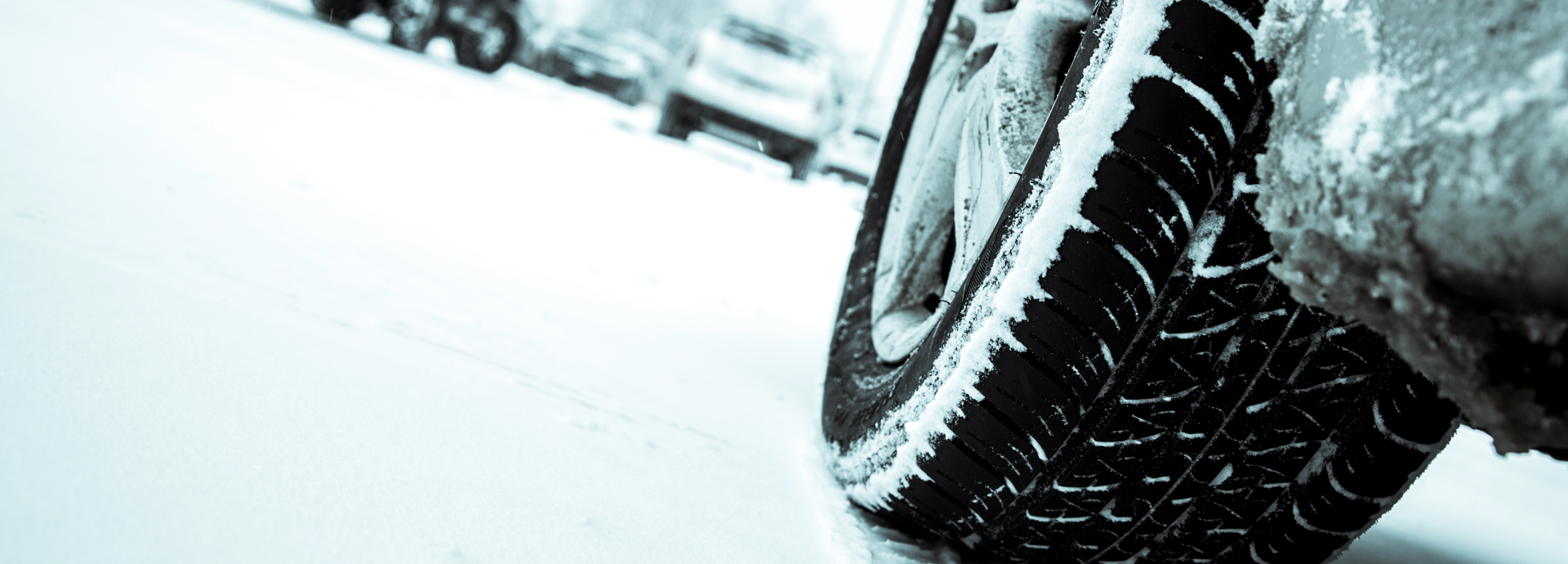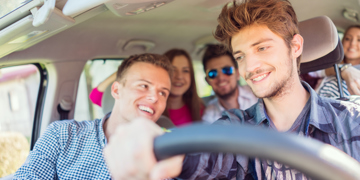MENU
×

 Driving advice
Driving advice
5 min read
There’s no denying that winter can be a scary time to drive.
The longer nights and possibility of sub-zero temperatures can make for some potentially very dangerous road conditions like patches of black ice or snow in the middle of the road.
This is a very real danger when the weather is bad and it is responsible for thousands of accidents across the country every year. So how do you stay safe out there driving in ice and snow? Can you stop your car from skidding?
How to stop your car skidding on ice and snow.
Well, as with most things, prevention is always better than the cure. You can decrease the risk of skidding or spinning out simply by keeping a careful eye on the road conditions
As well as driving more slowly and cautiously, you should avoid sudden braking, acceleration or turns, all of which can make it more likely for you to skid on ice or snow.
Imagine driving with a cup of water on your dashboard that you’re trying to avoid spilling! Keep it slow, keep it careful and you’ll greatly increase your ability to keep in control.
But sometimes things just do go wrong, often when you least expect them. If you find yourself starting to skid or slide on the ice and snow or even in the rain!
Here’s what to do:
1) Don’t slam on your brakes
Everyone’s gut reaction when their car starts to feel like it’s going out of control will likely be to step on the brakes in an attempt to bring it to a stop as quickly as possible.
However, according to the Institute of Advanced Motorists (who you’d think would know a thing or two about driving), braking while your car is skidding will likely only make things worse.
Instead, the IAM says you should gently let off the accelerator and allow the speed to drop by itself, at least until your car is pointing straight again at which point you can very gradually start to apply braking pressure.
2) Turn into the slide
To actually correct the slide and get yourself pointing in the right direction again, you’ll have to get a little handsy with the steering wheel.
Turning into a slide has nothing to do with bad magic tricks; instead, it’s all about turning your front wheels in the same direction that the rear end is sliding, which will help stop the car from rotating, the IAM says.
If your car slides to the right, turn your steering wheel to the right. If your car slides to the left, turn your wheel to the left.
Remember to always keep your eyes focused on where you want the car to go, not where it’s going. This will give you a target to aim towards and will help you pull out of the skid earlier and more effectively.
3) Don’t panic and try not to over-correct
We all know that saying don’t panic - but to a panicking person it is about as much use as a glass hatchet, but it’s important to try and stay as calm as possible if your car suddenly starts to skid.
Try not to over-correct or where you apply too much steering in the opposite direction and cause the car to snap back, increasing the likelihood of a full-blown spin in the middle of the road.
The IAM says that the amount of steering correction you apply should be directly proportional to how far and how fast the car is sliding out. Small slides will only require slight steering motions, but faster ones will require quicker steering input.
What do I do if I have a crash?
Unfortunately, worst does sometimes come to worst. If you’re unfortunate enough to be involved in a crash, the key is to try and stay as calm as possible. Even taking a few deep breaths will help focus your mind on what to do next.
If you are involved in an accident, either on your own or involving other vehicles or people, here’s a quick checklist of what to do:
First of all, make sure that you and anyone else involved in the crash is safe. If you or another person is injured, call the police or ambulance on 999 immediately.
If the accident is blocking the road and your car is driveable, try to move it out of the middle of the road so it won’t obstruct anyone or risk causing another accident. If you require police assistance but it’s not an emergency, ring 101.
If there are any witnesses or other people involved in the accident, you should collect their details and insurance information but it’s important to not apologise or take responsibility, as this could affect your own claim later down the line.
Call a family member or a friend who you can rely on to come and help you out and, if necessary, help you get home.
Finally, call your insurance provider even if you don’t intend to make a claim, just to keep them updated and to see if your policy allows you access to emergency help like roadside assistance.
If possible, you could also at this point take some pictures or video clips of the scene and of your vehicle to help if you need to make a claim on your insurance.
Anything else?
At the end of the day, you can only learn so much from reading stuff on the internet. If you want to truly prepare yourself for driving in the winter, you can book an advanced driving session which will cover things like how to control a skidding car and stay safe on ice, frost and snow.
In the absence of that, here’s an ace video full of great tips from professional driving instructor and former rally driver Lionel Firn you can refer to
https://www.youtube.com/embed/YEAt27Rzb54
Was this article helpful?
Thanks for your feedback!

Young people are more likely to die in a preventable road crash than they are to die from any other single cause. 20% of fatalities are caused by 16-24 year old and 1 in 5 young drivers have an accident within their first 12 months of driving.
Lifestyle3 min read